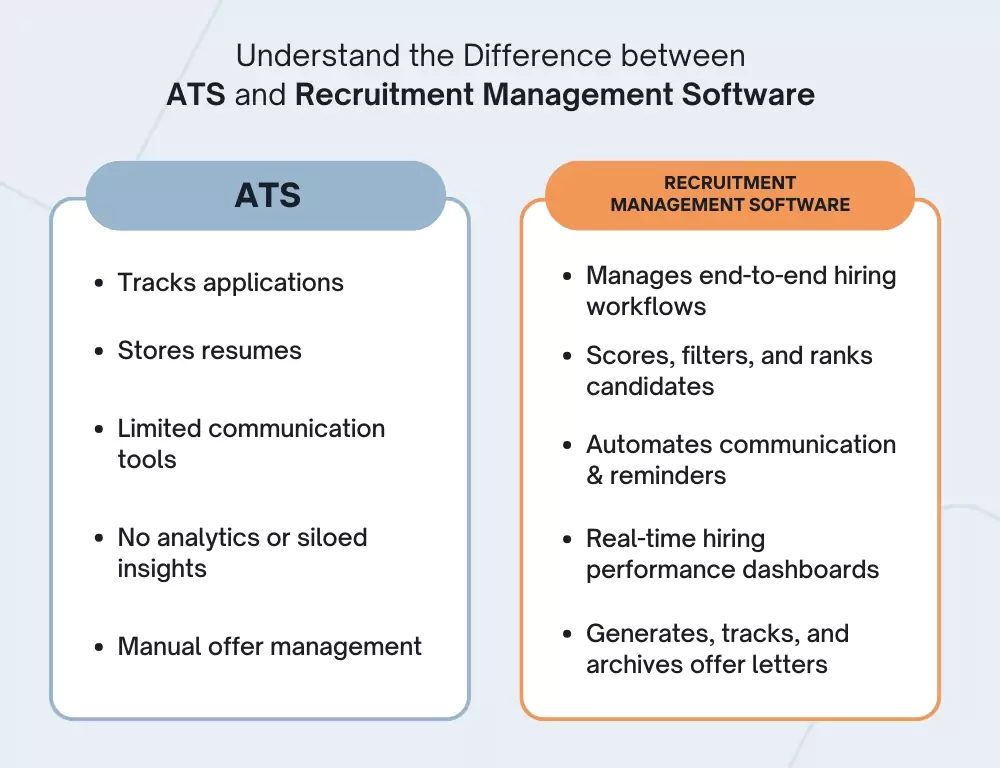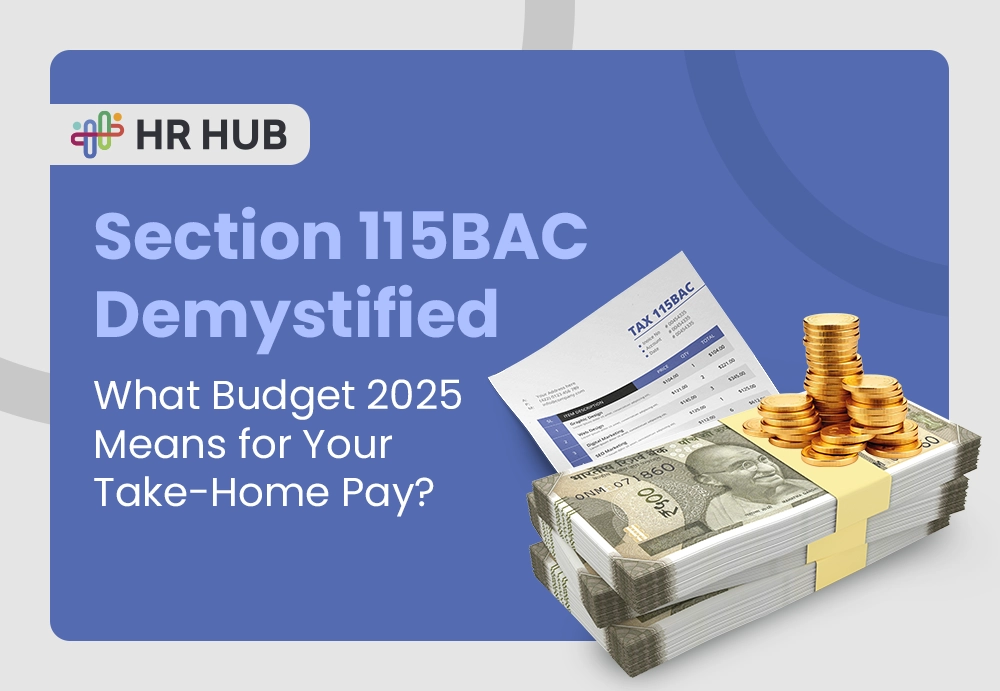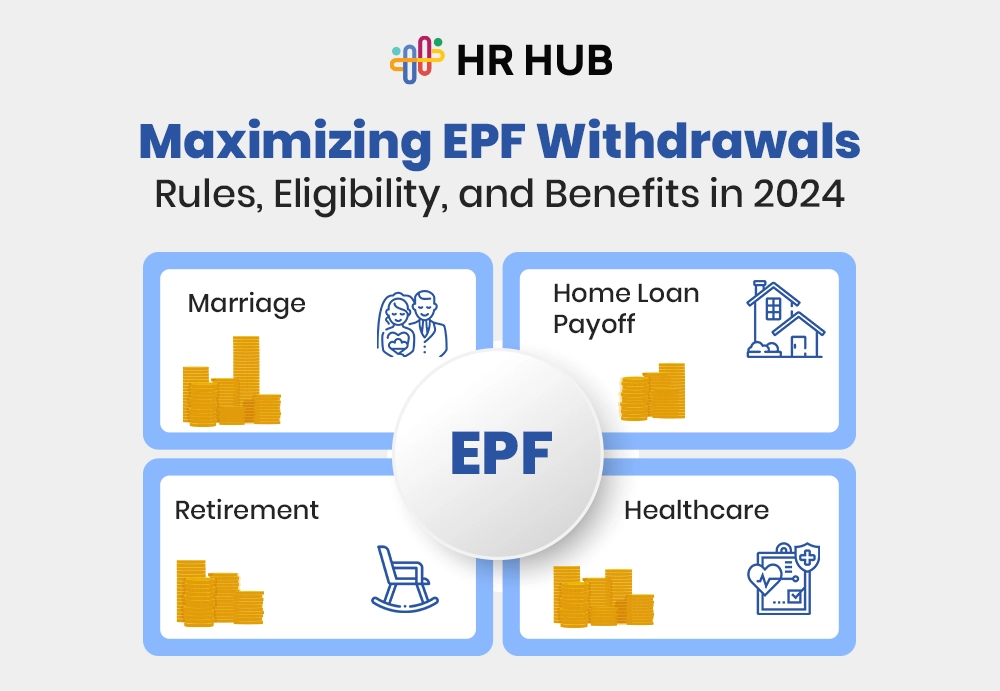Hiring has always been a high-stakes game—but in today’s market, it’s no longer just about finding talent. It’s about winning it, winning fast, and winning right.
You may be hiring for culture fit, skill alignment, or rapid scale. But if your hiring process still looks like email chains, unstructured spreadsheets, and rushed interviews, you’re not just risking poor hires—you’re risking your business edge.
Here’s the truth: Smarter hiring doesn’t come from adding more recruiters. It comes from giving them smarter tools.
Enter recruitment management software—a powerhouse solution that rewires your entire hiring journey, from posting the job to sealing the offer.
The Hiring Hurricane: Why the Old Way Isn’t Working
Let’s begin with a quick reality check.
You’ve got:
- A hiring manager who’s short on time but big on expectations.
- Candidates ghosting mid-process or dropping off after multiple rounds.
- Interview feedback is scattered across using traditional software methodologies.
- HR teams are often overwhelmed with manual coordination, frequently working in silos.
And amid all this chaos, you’re expected to deliver speed, quality, and efficiency, with zero room for error.
That’s what hiring feels like today without a system in place.
So, What Is Recruitment Management Software?
Imagine one platform where everything related to hiring—job creation, candidate tracking, communication, collaboration, and even analytics—comes together.
That’s recruitment management software in action.
It’s not just a digital filing cabinet. It’s a central intelligence system for your entire hiring operation.
Core Features Typically Include:
- Multi-channel job posting to job boards, career sites, and internal portals
- Automated resume parsing with keyword mapping and scoring
- Candidate pipeline tracking across interview stages
- Smart interview scheduling with calendar syncing
- Real-time collaboration tools for recruiter-hiring manager feedback
- Offer letter management and onboarding initiation
- Reporting & analytics dashboards with hiring KPIs
However, the real magic lies in how these features connect to bring structure, visibility, and efficiency to your hiring process.

Let’s Go Deeper: What This Software Really Solves
Behind every hiring delay, candidate dropout, or recruiter burnout, there’s usually a broken process hiding in plain sight. Recruitment management software doesn’t just digitize what you do—it fixes what’s slowing you down.
Here’s a closer look at the root problems it eliminates:
1. The Resume Avalanche: Drowning in Applications
It’s a paradox—job portals and LinkedIn make it easier than ever to receive applications. However, quantity doesn’t always equate to quality. A single job posting can attract 200 to 300 resumes, with only a handful meeting the actual job criteria.
Manually reviewing this pile becomes a draining, repetitive task. Recruiters skim hundreds of resumes daily, increasing the risk of:
- Overlooking qualified candidates
- Unconscious bias influences decisions
- Fatigue leading to inconsistent shortlisting
And when speed matters, guess what happens? The fastest response wins, not the best fit.
Recruitment management software changes the game by using AI-powered parsing and keyword mapping to:
- Automatically match resumes with your job description
- Rank candidates based on experience, skills, certifications, and even custom scoring rules
- Flag high-priority candidates for immediate action
It doesn’t just “filter”—it intelligently narrows the funnel to your best options, freeing up your team for meaningful engagement, not manual screening.
Your hiring team spends less time digging through noise and more time speaking with genuinely qualified talent.
2. The Coordination Chaos: The Interview Bottleneck
You’ve shortlisted top candidates, great. Now comes the part that derails even the most organized HR team—scheduling interviews.
Here’s the typical mess:
- The hiring manager is out on client calls all week.
- The candidate is available only on Friday afternoons.
- The recruiter is coordinating between both via emails, messages, and phone calls, sometimes over several days.
Meanwhile, the candidate is losing interest. Or worse, accepting another offer.
With recruitment management software:
- Calendar integrations (such as Google Calendar and Outlook) enable candidates to self-book interview slots based on predefined availability windows.
- Automated reminders are sent to both candidates and interviewers.
- Instant rescheduling tools prevent long delays due to last-minute conflicts.
- Feedback forms are built into the post-interview workflow, nudging interviewers to respond on time.
This isn’t just about saving time—it’s about preserving momentum in the hiring journey.
Interviews get scheduled faster, feedback is captured more reliably, and candidates stay engaged.
3. The Ghosting Problem: When Silence Sends Candidates Away
Let’s be honest—when candidates ghost you, it’s often because they feel ghosted first.
Today’s job seekers expect:
- Timely responses
- Clear communication
- Visibility into their status
And yet, many companies fail to acknowledge applications, delay updates, or provide vague timelines. This sends the signal: We don’t value your time.
Recruitment management software flips the narrative:
- Automated acknowledgments are sent as soon as a resume is submitted.
- Candidates receive real-time status updates at every stage.
- Some systems even offer two-way communication portals, allowing candidates to ask questions or submit documents securely.
This reduces uncertainty and builds trust—two powerful tools for a better candidate experience.
Fewer drop-offs, stronger engagement, and a more positive employer brand—even among rejected candidates.
4. The Reporting Black Hole: When HR Operates Without Insight
Without data, hiring becomes a guessing game. You may sense delays, bottlenecks, or underperformance, but you can’t prove or solve them.
Some questions you should be able to answer at any moment:
- How long does it take to hire for each role?
- Which sourcing channel delivers the best quality?
- Who are our top-performing recruiters?
- At which stage do most candidates drop off?
Recruitment management software puts all this on your dashboard with:
- Real-time analytics on time-to-hire, source effectiveness, conversion rates, and more
- Custom reports that track performance per role, department, or recruiter
- Visual charts that spot bottlenecks, delays, or stage-wise leaks
With this visibility, you stop reacting to problems—you start solving them proactively.
Data-driven hiring decisions replace guesswork, helping you scale with precision.
But Don’t We Already Have an ATS?
This is the question many HR leaders ask. And the answer is nuanced.
Yes, you may already use an applicant tracking system (ATS). But chances are, you’re still:
- Manually scheduling interviews
- Sending offer letters via email
- Gathering feedback over calls
- Building reports in spreadsheets
That’s because most ATS platforms act like storage systems—they track, but don’t manage.
Recruitment management software does more. It adds smart functionality across the entire hiring lifecycle:

Think of your ATS as a filing system.
Think of recruitment management software as your hiring command center.

Connecting to the Bigger Picture: HR Software for Recruitment
Let’s zoom out for a second.
Hiring doesn’t happen in isolation. Every new hire enters a chain of actions—onboarding, document verification, compliance, payroll setup, and more.
When your recruitment management software is integrated with a broader HR software for recruitment, you create an end-to-end talent engine.
Here’s what happens behind the scenes:
- Once a candidate is hired, their information is automatically passed to the onboarding team—no duplicate data entry.
- Payroll systems receive their joining date, role, department, and salary details—ready for the first pay cycle.
- The employee is auto-enrolled in orientation tasks, manager introductions, training modules, and policy acknowledgements.
- HR can track probation periods, initiate appraisals, and set role-specific goals—all from day one.
This isn’t just a smoother experience—it’s true digital transformation across the employee lifecycle.
Outcome: From recruitment to retention, every team works in sync. No silos. No delays. Just one fluid system.
Where Smart Hiring Takes Off: Your HR HUB Advantage
Let’s be honest—implementing any new system feels overwhelming. But what if you could plug into a platform that’s already designed to handle it all?
That’s where HR HUB comes in.
With HR HUB’s recruitment management software, you’re not just getting a tool—you’re investing in a system that:
- Empowers your HR team to automate and manage every hiring stage
- Enables collaboration between recruiters, managers, and leadership
- Delivers a stunning candidate experience with branded communication and portal access
- Integrates deeply with onboarding, employee profiles, payroll, and even performance systems
- Offers rich analytics for complete hiring visibility
Whether you're hiring 5 or 500, HR HUB gives you the scalability, clarity, and control you’ve been waiting for.
Let Smarter Hiring Be Your New Normal
You’ve read the resumes. You’ve scheduled the interviews. You’ve waited for feedback. You’ve juggled calendars, calls, and candidate follow-ups.
Now, it’s time to let the system do the juggling—so you can focus on what matters: hiring the right people, building great teams, and growing your business.
Smart hiring doesn’t start with more work.
It starts with the right system.
It starts with HR HUB.






